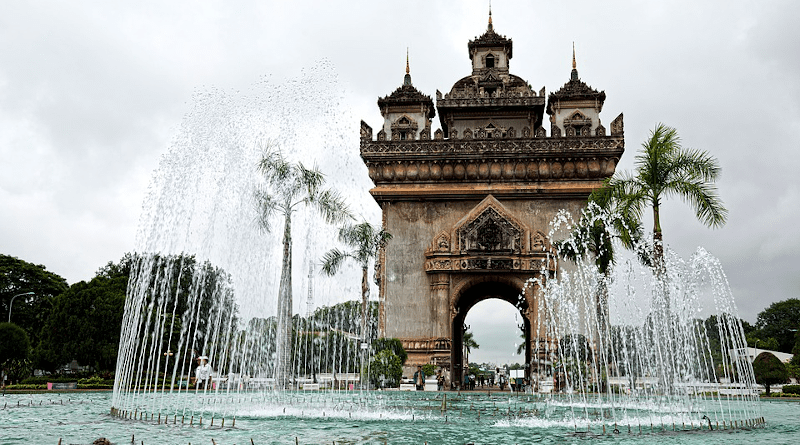Economic Progress Brings New Challenges In Laos – Analysis
By Kearrin Sims*
It was a milestone year for Laos in 2021. The ruling Lao Peoples’ Revolutionary Party held its 11th Congress, finally realised its long-held aspiration to graduate from Least Developed Country status, and released a draft of the country’s ninth National Socio-Economic Development Plan. Laos also joined the newly ratified Regional Comprehensive Economic Partnership (RCEP), commenced operations on the highly controversial Kunming to Vientiane high-speed railway, and the leadership duo of President Thongloun Sisoulith and Prime Minister Phankham Viphavanh undertook some much-needed action on political corruption.
Laos was first categorised as a Least Developed Country by the United Nations in 1971, and graduating from this status had been a major development priority since 2000. The 2021 recommendation for graduation — with an extended five-year preparatory period to 2026 — likely brought pride to many in government. But graduation will also come with new challenges that require careful planning. This includes the loss of trade privileges, decreased special and differential treatment from the World Trade Organization, reduced access to international development financing and increased budget contributions to UN entities.
RCEP came into effect in January 2022 as the world’s largest free trade agreement. Incorporating over 30 per cent of global trade, global GDP and the global population, RCEP seeks to standardise rules on investment and other trade practices and remove tariffs on 91 per cent of goods.
Concerns about the impact of RCEP on the poor, the environment and important national industries have been raised since the agreement was first proposed. Of particular concern for Laos are implications for further land concessions and displacements, which have long caused social tensions and impoverishment across the country.
With India’s withdrawal from RCEP in November 2020, and an earlier decision by the United States not to join, the mega-free trade agreement will also likely draw Laos and other ASEAN economies closer to China. Laos’ ties with China were already further amplified in 2021 when the two countries established a Chinese-owned joint venture company to co-manage the national electricity grid.
In another boost for the bilateral relationship, the first freight train to travel the Laos–China railway arrived in Vientiane from Kunming in December 2021. The railway has become the chief symbol of Laos’ strengthened relations with China and was opened with much celebration and fanfare regarding the invaluable ties between the two countries.
A contentious project, the railway displaced more than 4000 families across Laos and left the country with a heavy debt burden. The opening of the railway to international tourists in 2022 will mark a new phase for the project, albeit one shadowed by the effect of COVID-19 on cross-border mobility.
Connectivity remains a key development priority for the Lao government, and new COVID-19 management measures have also been implemented at Wattay International Airport and Vientiane’s Lao–Thai Friendship bridge to facilitate a reopening to business and tourism.
While the pandemic has not halted Laos’ connectivity and megaproject-led development agenda, 2021 did see some notable efforts to curb corruption. In November, findings by the State Inspection Authority reported losses of US$214.7 million resulting from corruption, and in December nine government officials in Bokeo province were expelled from the LPRP on charges of embezzling state funds. Hopefully such crackdowns on corruption will continue in 2022, and perhaps gain momentum through the debt-driven need to reform failing state-owned enterprises.
COVID-19 has had a significant economic impact on Laos, destroying businesses, livelihoods, incomes and employment. In May, a survey of poor and low-income households revealed that more than 84,000 people were unemployed and suffering severe financial hardship due to the pandemic.
Supported by international donations, vaccine rollout has been reasonably strong, with more than 3.28 million people (out of a population of 7.27 million) having received a first vaccine dose by November. But the country’s healthcare system has limited capacity to deal with major outbreaks — careful planning and management and mitigation measures will be needed throughout 2022.
While trade and investment has slowed with the closure of borders, transnational crime including the trafficking of narcotics into, and young women out of Laos, has expanded. In a single week in October, Lao authorities made three large narcotics seizures, one of which was the largest in Asia’s history with 55 million methamphetamine pills and 1.5 tons of crystal methamphetamine. As people across the Mekong region experience destitution and desperation resulting from the pandemic, the trafficking of drugs and vulnerable people will remain a persistent challenge.
Despite some positive signs, Laos enters 2022 in serious financial trouble. It owes an average of US$1.16 billion per annum in debt repayments between 2022 and 2025, and its slowing economy does not appear to be able to generate the finances required to meet these obligations.
Recognising the precarious position that it is in, the concern is that the many changes of 2021 will be accompanied by a doubling-down on the same development strategy that caused the current challenges — exorbitant investment in infrastructure megaprojects and a prolonged fire sale of land and natural resources to foreign buyers.
*About the author: Kearrin Sims is a research fellow of the Cairns Institute and a lecturer of development studies at James Cook University, Cairns.
Source: This article is published by East Asia Forum and is part of an EAF special feature series on 2021 in review and the year ahead.

